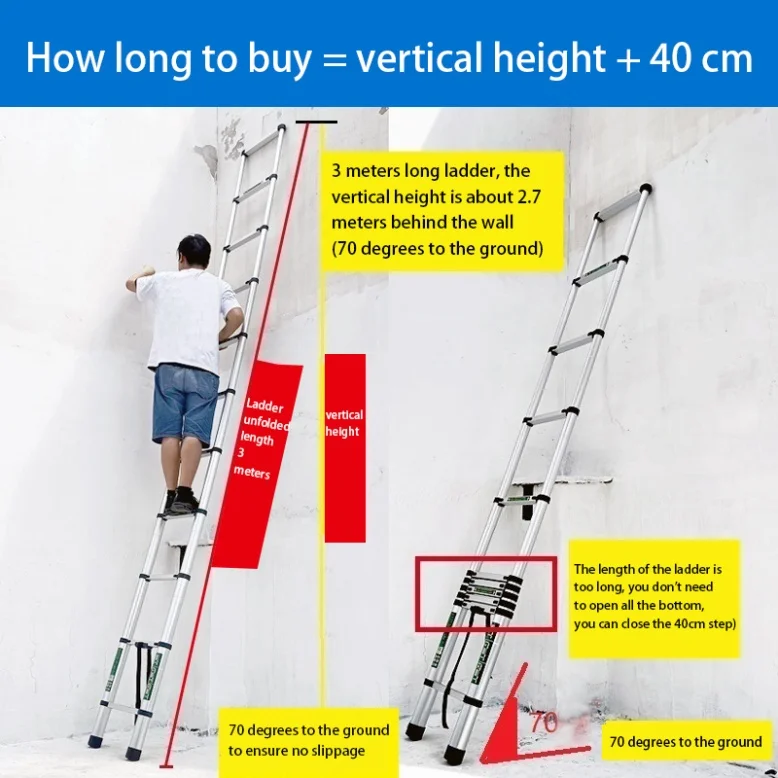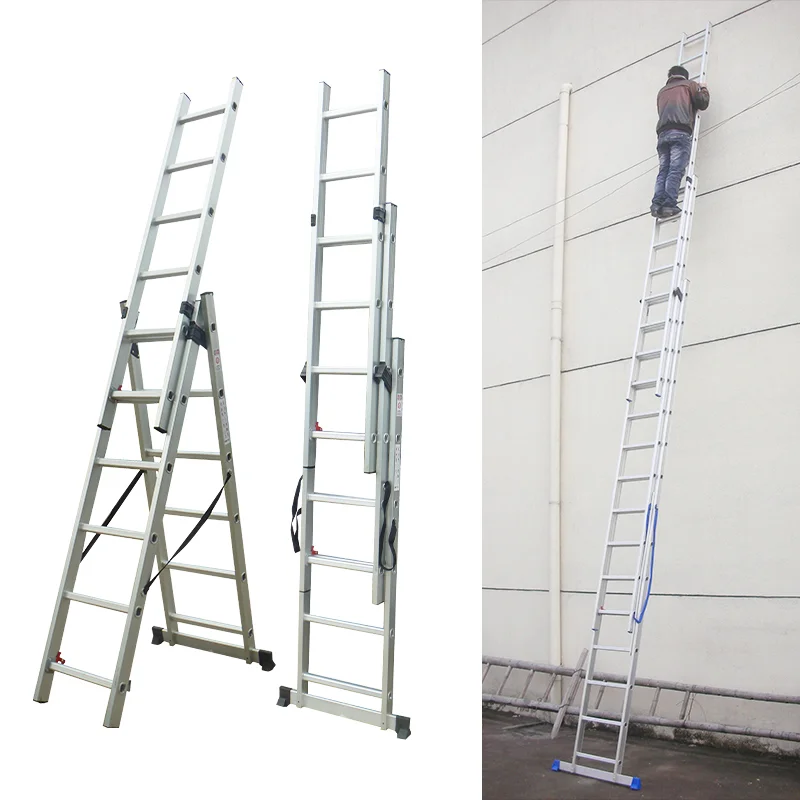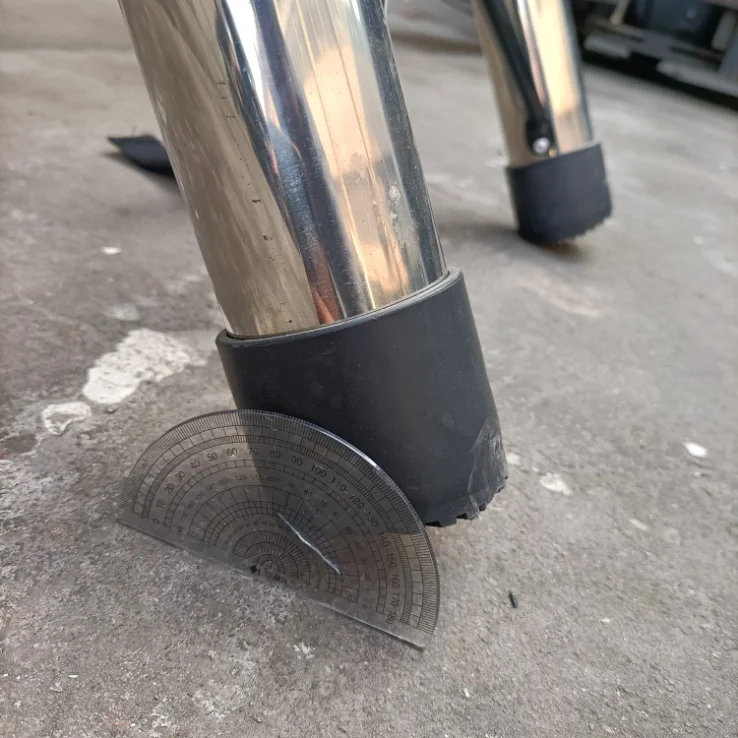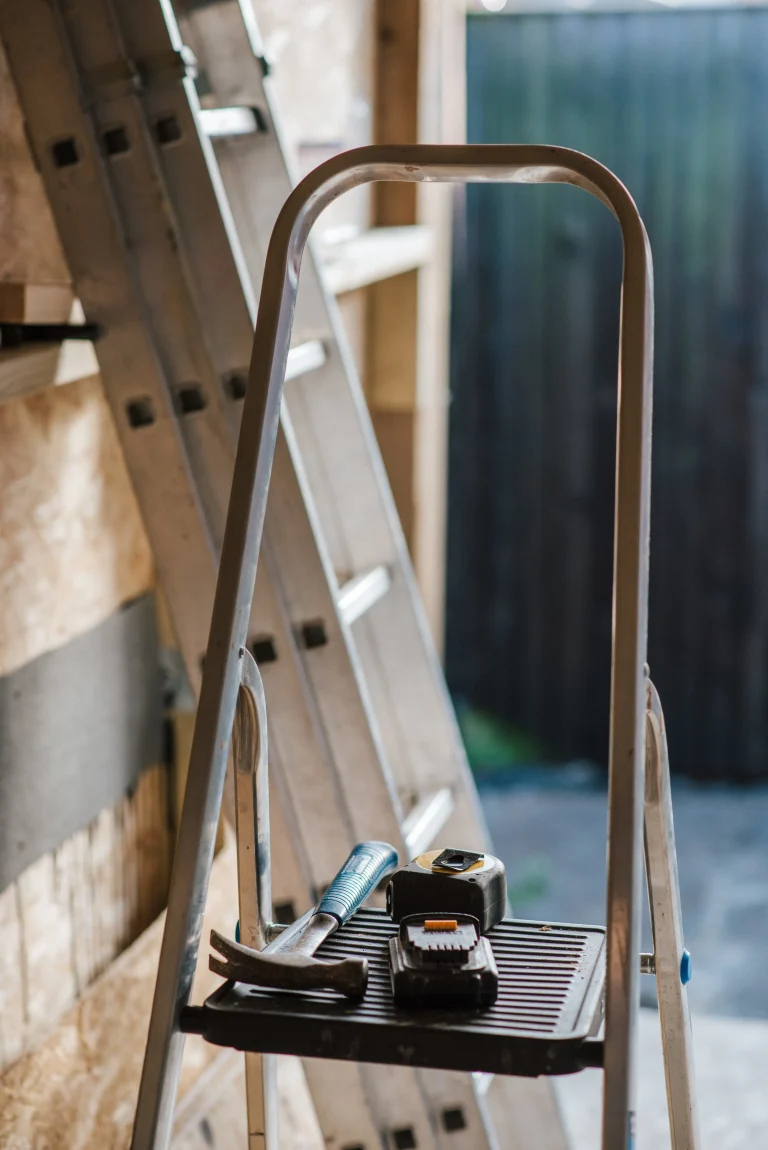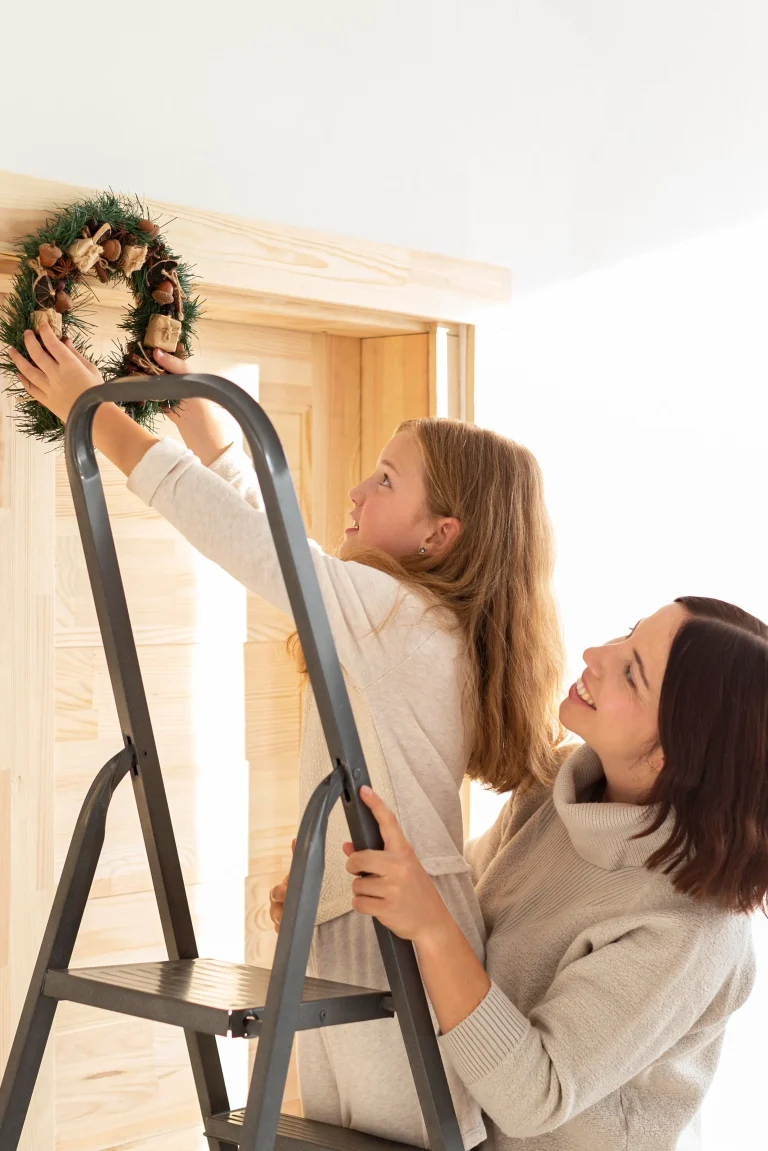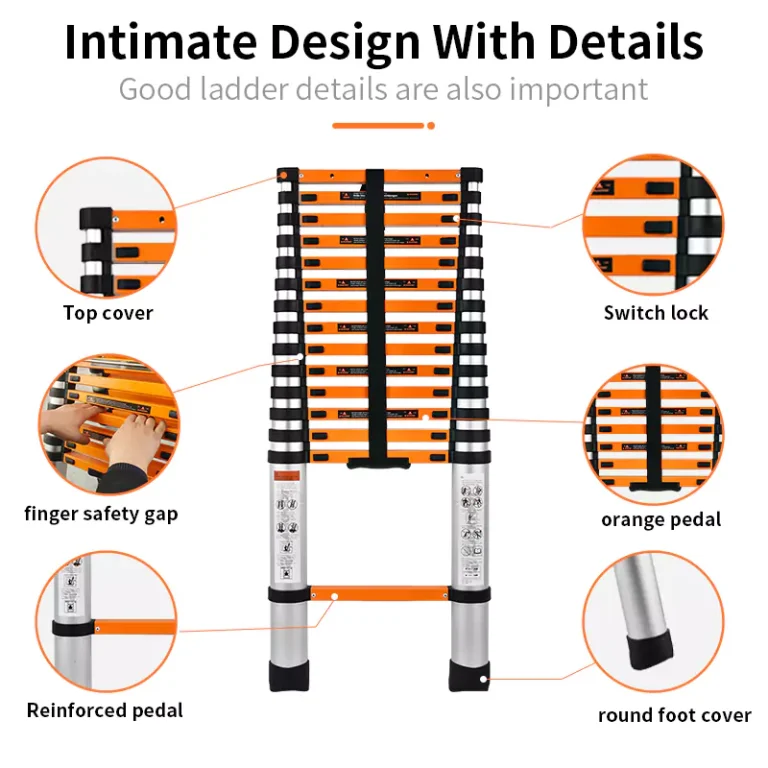Proper extension ladder positioning is crucial for safety, as incorrect angles can lead to tipping, sliding, or falls. The 4-to-1 rule (1 foot out for every 4 feet up) ensures stability, while tools like angle finders and digital inclinometers help achieve the ideal 70-75-degree angle. Key safety steps include inspecting ground stability, securing the ladder’s base and top, and using anti-slip accessories. JADDUO ladders enhance safety with built-in angle indicators, anti-slip bases, and durable designs for both lightweight and heavy-duty use. Regular maintenance, user training, and adherence to safety protocols further minimize risks in professional and industrial settings.
Why Is Correct Extension Ladder Setup Vital?
How Do Ladder Angles Affect Safety?
The tilt of your extension ladder greatly influences its steadiness and security. If the ladder stands too upright, it might topple backward. If it’s too flat, the base could slip. The perfect tilt keeps these forces balanced. This creates a safe climbing and working position. Proper setup lowers the chance of accidents from poor balance or uneven weight distribution.
What Dangers Come With Wrong Ladder Placement?
Mistakes in positioning can cause serious injuries. These include high falls or the ladder buckling. A poorly placed ladder might not hold your weight properly. This risk increases on unlevel or slick ground. Wrong angles also make slips and balance loss more likely during use.
How To Find The Right Extension Ladder Angle?
What Is The 4-to-1 Guideline?
This common safety rule helps set safe ladder angles. It means for every four feet of height reached, the base should sit one foot from the wall. For instance, a 16-foot tall ladder needs its base 4 feet from the structure.
Which Instruments Give Precise Angle Readings?
Using Builder’s Levels and Angle Gauges
A builder’s level checks if your ladder stands straight. An angle gauge can verify the suggested 70-75-degree slope.
Can Tech Tools Offer Better Precision?
Today’s digital devices provide more exact measurements. Phone applications and digital angle meters make setup easier. They help meet safety requirements accurately.
Steps For Safe Extension Ladder Setup
Why Check The Ground First?
Always examine the surface before placing your ladder. Look for firm, flat ground. Stay away from slippery spots like wet pavement or greasy floors. A stable base prevents sudden shifts while working.
How To Position The Bottom Properly?
Choosing Solid, Even Ground
Set the ladder on clean, level terrain. Use leveling mats if needed to create a flat base.
Steering Clear Of Hazardous Areas
Never place ladders on polished floors or damp ground without non-slip aids. These steps stop unexpected sliding.
How To Fasten The Ladder Top Securely?
Leaning On Sturdy Supports
Make sure your ladder rests against solid structures like walls or roof edges. The top should reach at least three feet above your work area for safe gripping.
Using Security Add-ons
Attachments like safety hooks or tie-downs keep ladders from moving. Rubber contact pads improve grip on smooth materials.
Reviewing JADDUO Ladders For Best Setup
JADDUO ladders focus on security and practicality. They include built-in tilt guides for perfect 70-75-degree placement. Their non-slip bottoms work well on different floors. The brand offers easy-to-move light versions and tough industrial choices. These maintain strength and dependability. Made for experts, these ladders boost productivity and protection in various jobs. Discover JADDUO’s creative designs for customized climbing solutions.
JADDUO Ladder Safety Features
Integrated Angle Guides
These ladders stand out with their built-in tilt indicators. They guarantee correct 70-75-degree placement always. This position offers maximum steadiness. It cuts tipping or slipping risks. The guides prove especially helpful at job sites needing exactness. Examples include building projects or plant floors. These tools remove estimation needs. They help follow safety rules.
Non-Slip Bottom Systems
These ladders feature advanced grip technology at their base. This adds protection on multiple surfaces. It’s crucial when working on slick areas. These include bathroom tiles or damp pavement. The rubber feet provide strong traction. This reduces unexpected movement risks. For workers in changing settings, this tech greatly improves security and workflow.
Top JADDUO Picks For Workers
Easy-To-Move Designs For Quick Changes
Jobs needing regular moves require portable ladders. Made from sturdy aluminum mix, these balance strength with lightness. Their lightweight build allows comfortable carrying. They don’t sacrifice framework strength. Perfect for technicians or decorators moving between spots. These designs save effort and time.
Industrial-Grade Choices For Tough Jobs
Factory work needs strong equipment. These models handle heavy weights and rough conditions. They have strengthened frames and broader anti-slip steps. These support intense use. Many have layered parts that spread weight uniformly. This improves steadiness with heavy loads. They’re ideal for big repair jobs or manufacturing plants where trustworthiness matters most.
Find top-grade climbing solutions for your requirements at JADDUO. Their fresh designs focus on security and usefulness for different uses.
Safety Maintenance Tips For Extension Ladders
Routine Checks And Care
Regular examinations maintain ladder safety. Inspect steps, connections, and locks before each use. Confirm all fasteners are tight. Look for any damage like splits or warping. Post-use cleaning matters too. Clear any dirt or oil that might affect grip or balance.
Also oil moving pieces occasionally for smooth function. This prolongs the ladder’s life. Swap worn parts like rubber tips right away. This maintains top performance.
Worker Education Initiatives
Good gear alone won’t prevent all accidents. User knowledge is key. Full training programs should teach proper ladder techniques. Stress keeping three limbs touching when climbing. Highlight weight limit observance.
Safety drives can point out frequent dangers. These include stretching too far or incorrect angles. Building a safety-focused culture through learning cuts worksite ladder accidents greatly.
FAQs
Q1: How can I confirm proper extension ladder placement?
A: Apply the 4-to-1 principle: One foot out per four feet up. Use built-in tilt guides when present for exact adjustment.
Q2: What if my ladder’s grip feet get damaged?
A: Change them right away with proper replacements to keep surface hold.
Q3: Can light ladders manage factory work?
A: They’re good for fast changes but lack industrial strength. Choose reinforced types for heavy tasks.

